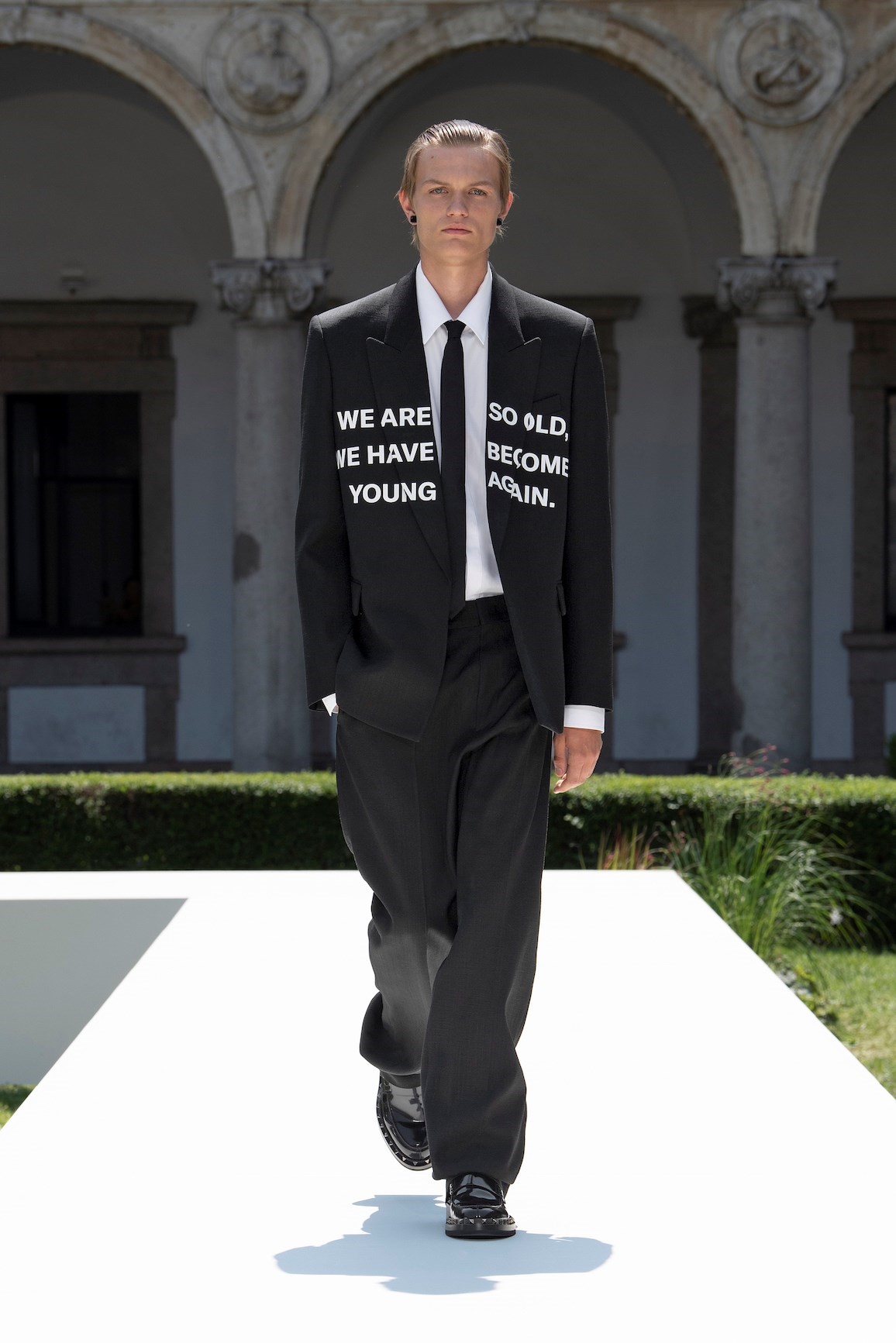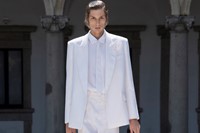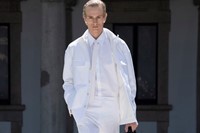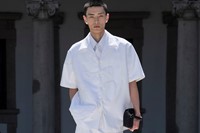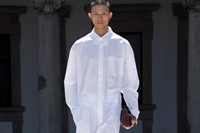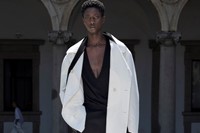When Valentino Garavani first showed his menswear line in Milan in 1985, times were very, very different. Yes, there was no Internet and no iPhones, but maybe more fundamentally than that, the clothes we put on our backs were markedly divergent from today. Menswear back then was all about power – power suits, with power shoulders, knotted up with a power tie (yes, read American Psycho, those were a real Yuppie thing).
None of that really chimes with what Pierpaolo Piccioli proposes for Valentino now – a vision of the world that’s sensitive and nuanced, all-embracing and consciously diverse. He’s rinsed gender from dress, in a sense – not resulting in the neutered unisex of the early 1970s, but rather meaning that a guy may walk his haute couture show in a limoncello-yellow ruffled chiffon evening gown and it seem neither out of place nor like a showboating shock-tactic. Instead, it seems just right.
Spring/Summer 2024 was Valentino’s first stand-alone menswear show since 2020, and Piccioli took it as an opportunity to question the meaning of modern masculinity. He drew inspiration, in part, from Hanya Yanagihara’s 2015 novel A Little Life, a bestseller focussed on the intersecting lives of four different men which has been heralded as “the great gay novel”. For Piccioli, though, it isn’t about sexuality or even gender, but about emotion, fragility and vulnerability. “Those can be strengths,” Piccioli said. They also resonate with discussions happening about masculinity today, at wider levels, which Piccioli wished to reflect and discuss through his work.
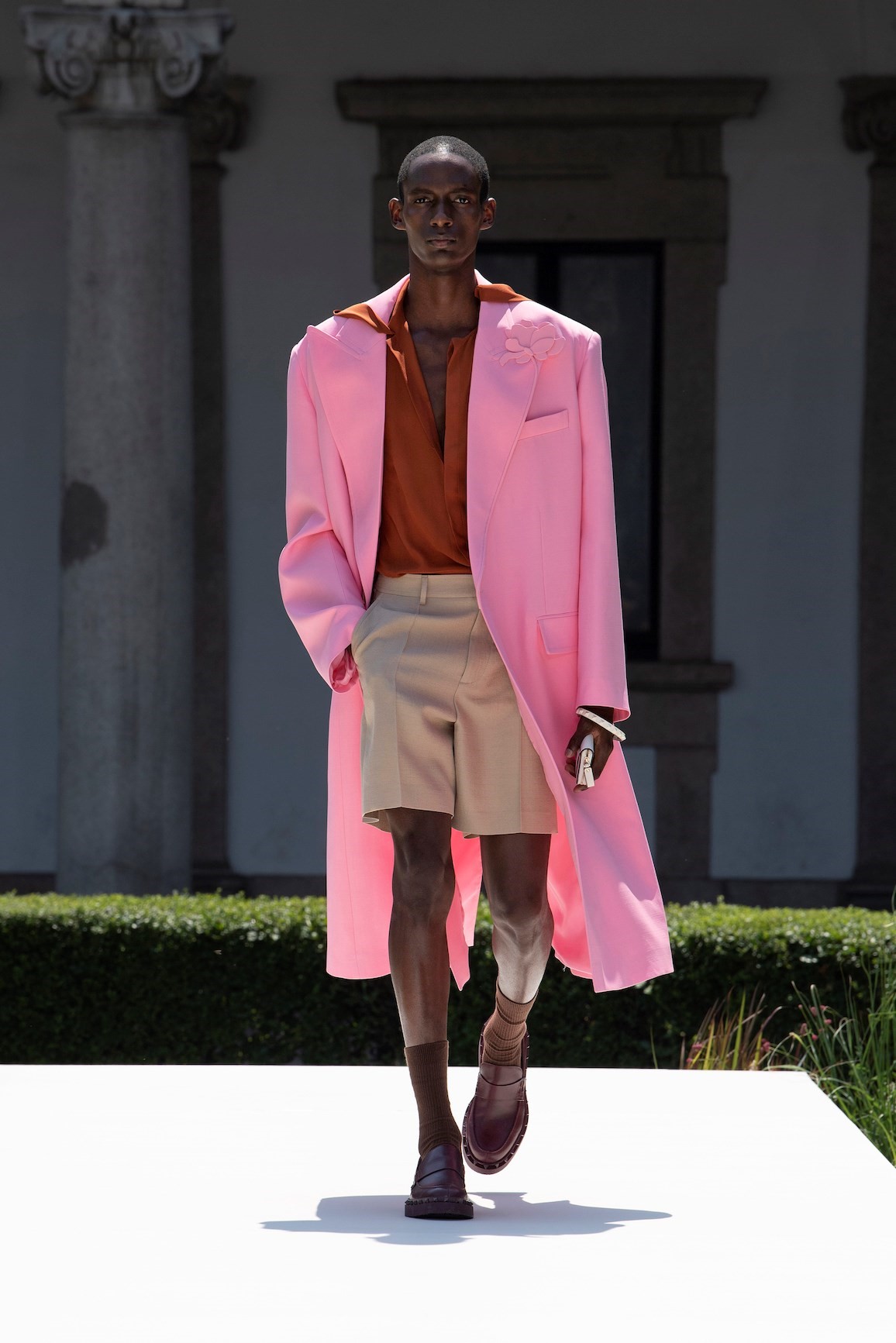

How? He said it with flowers. Flowers became a symbol of strength and delicacy, as well as life and its transience, and were used as substitutes for restrictive neckties (an idea Piccioli also explored in his last women’s ready-to-wear show). As embroideries, corsages or appliqués, they also festooned all manner of garments, from formal tailoring – perhaps expected chez Valentino – to the ‘bleu de travail’, the jackets often worn by French manual workers in a particular shade of virulent cobalt, as well as overcoats and wide-cut overshirts. The colour palette – always Piccioli’s strong point – was masterful, contrasting pale lettuce, bleached sandstone, pink and fuchsia, emerald green and scarlet. And the shape of tailoring was eased, jackets cut to slope off the figure, trousers sliced into skirts or shorts, or fused with shirts to form overalls.
If these sound like the building-blocks of many a man’s dress, that was precisely the point – to work from within the system, Piccioli said, to affect real change. Hence the fact Piccioli presented this show in Milan, steeped in Italianate sartorial tradition, and rooted in the name Valentino, with its ties to Roman masculinity. In a sense, he’s bucking from the inside, not rejecting tailoring but evolving it, to have relevance and resonance with a new generation, and a new time. “I wanted to work on a classic men’s wardrobe,” said Piccioli, simply. “Changing it, to become more gentle.” The new gentle man indeed.
